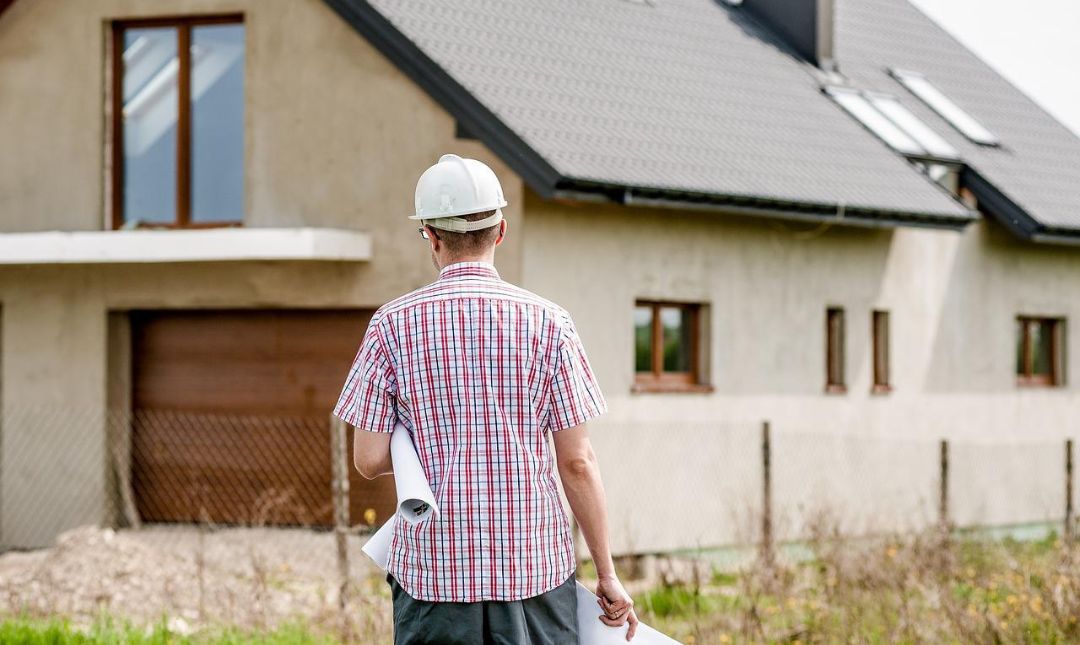Roof Damage from Hail: The Silent Threat to Homeowners
Roofs generally require replacement every 30 years, typically because of damage caused by strong winds, storms, hail breaks, or heavy sticks. However, some damages can occur at even more frequent intervals. Essentially, the roof may be aging before its time. Side wind, earth–drain, and debris may cause significant damage to a shingle. In coastal and saltwater locations, wind damage can leave a roof in poor condition with deterioration as early as 15 to 20 years.
Hail damage is one of those incidences where quick response and appropriate action can· help save your investment· prevent further damage to the roof· delay future repairs· save you time and money.
One of the best clues to viable hail damage is often the presence of granules. Galls, workup, or flaking can appear on the surface of the shingle. If you are commonly exposed to strong hail, such damage may appear on the surface of your shingles too. If the inside of the shingle looks like it has been severely damaged, take the pan out and walk around and inspect your rooftop.
You can leak your insurance policy effectively if you have been provided with homeowner’s insurance for hail damage. If you haven’t received an estimate through your insurance company inquire with your insurance agent if your insurance company will pay a portion of the cost of replacing your shingles.
For those who specialize in hail damage, it is usually best to call a certified restoration company that can respond expediently to your request. Make sure to let the hail damage restoration professionals you choose to check the structural integrity of your roof first. Not every hail damage is alike.
Keep in mind that if you have homeowner’s insurance hail damage coverage, your insurance policy usually includes two forms of coverage: (1) bodily harm including broken glass or serious damage caused by hailstones, and (2) property damage.
Usually, if a roof repair is needed to cover the cost of repairing the hail damage, the insurance company will reimburse the homeowner for the amount of the damages. Since the initial impact of the hail strike is quite minimal, damage to the interior of the home is not generally covered by insurance.
After assessing the damages, a professional inspector can help homeowners understand their options regarding the full restoration process that is necessary to salvage a damaged roof.
Because hail damage is actually quite common, homeowners should not buy anything to add to the total weight of the roof on their homes. A roof weighing over 35 pounds is quite a bit more substantial than that which has only a few grains of grit, granules, and other valuable roofing accessories. Properly restoring your damaged roof will require that a new roof be installed on your home.
After this has been completed, and it is after the roof has been properly tested for safe weather tightness, a sealant is applied to the entire roof. Finally, the nails and hardware are replaced, and the area is treated with a product that will eliminate moss growth from forming (oil-based products are recommended). Some excess coating is probably necessary in order to properly enhance the roof coating. The effects of age on a roof will definitely be evident, but most of these damage occurrences are pretty small and require very little immediate attention.


Your Roof’s Leaking. Now What?
A leaky roof is a sign of a much larger problem, whether you notice it right now or months down the road.
The first step is to contact local experts. Look for established and reputable roofing contractors in your area. A good way to start is by using the Yellow Pages, but do some browsing on roofing websites to try to find better local companies. Although it isn’t common to have sustained damage of significant proportions, any damage to your roof needs to be addressed right away.
A quality company will be able to provide you with a free assessment. This will include an estimation of how much damage may have occurred and whether or not you need to replace your roof. This comprehensive assessment is necessary for decision-making so that you know what the true cost will be.
The next step is to choose the contractor who will manage the actual work. This varies significantly among various companies, but in most cases, it’s a good idea to date the company and then search for the type of work it does. This will help to narrow your search for the right contractor and will also reduce the chance of choosing your contractor after it has already gotten underway.
The most common method is to call around to the various contractors in your area. Make sure to advise them of your current situation and get a written estimate for the work. Many companies offer to finance. Typical payments are a percentage of the cost of the repair, but in many cases, the company can allow you to pay as you go to try to get the job completed.
When you are leaning for a contractor, take the time to find a contractor whom you feel is qualified and has the skills and know-how. Talk about your repairs with the contractor, such as specifications and traces you expect. Establish a working relationship with your contractor. If the repair isn’t finished or is done poorly, it is a good idea to file a complaint with your local Better Business Bureau.
Simply following an advice from someone may lead to disaster. A good contractor should be licensed and insured. If a professional roofing contractor takes on a water damage repair project, he will begin the procedure for payment immediately. If the contractor can’t pay depending on the amount of work, the insurance arguments can become pretty aggressive, so it’s a good idea to leave some aspects up to the contractor.
In the end, the best option is a contractor who understands the damage that has been done to your roof and the desired repair solutions.


A Roof Replacement Checklist
When hiring a contractor, several factors come into play that influences the process. One of those factors is time. Depending on your contractor, the time the cleanup and repair will take can vary greatly. It’s important to have an idea about when you’ll be able to start. Sometimes a contractor will be able to provide you with an estimate on how long it will take. It’s advisable to get a few estimates before sticking with one contractor.
Another thing to talk about with your contractor is your specific needs. Some contractors may provide design services to help you create a look that fits your needs. The amount of work you need to be done will depend on the size and types of debris in your specific location. If you have large trees in your yard that catch debris from the roof, you may need to consider having the gutters cleaned or replaced altogether. Most roofs have them, and it isn’t hard to get them clean enough to help you keep rainwater from getting in. This may be a factor in roof replacement, depending on what type of gutters and other roofing materials you want.
Your contractor will also be able to talk with you about your checklist for repair. This checklist will include the following:
* What size of roof and what needs to be done to improve it?
* When is your money due for a roof replacement?
* Should you tear off the old roof or just repair and then re-roof?
* How do you want yours to look?
* How much you are willing to spend.
If you want to stay up to date, or if the repairs will be complicated, make sure your contractor gets a clear picture of what needs to be done. Sometimes there are cosmetic differences that you would miss if you were solely in charge, but it’s important to discuss beforehand. This will also prevent additional fees that can add up.
If you cover this information up, your contractor will know what questions you should be giving without intelligent answers or Answers!


Methods For Finding the Right Roofing Contractor For Your Next Roof Replacement
The phone book and newspaper are the best sources for finding contractors. Contractors will indicate in their ads whether or not they offer insurance. Listings from roofing directories are also some of the best places to find your roofer.
Some contractors are willing to work directly with homeowners association as a condition of getting theoretically contracted jobs in the future. Call the phone book and find if a contractor is listed by the homeowner association for roofing. Usually, if the job involves the complete replacement of the roof, then a contractor that agrees in writing to a homeowners association contract should be consulted. Once the homeowners association has decided who to talk to about the job, contact the contractor, show them the job to be done by the owner, and ask them to negotiate a contract with the homeowners association for the job. This document should be about any company maintenance or repairs, including roofing. Make sure if something goes wrong, the homeowners association will assist in the repairs.
Keep contact information for your neighbors and businesses; if something valuable or urgent goes out, you will both know about it. Make sure you have someone who knows you through someone. I have a good friend that once installed a new siding roof every time the homeowners called him for maintenance. The job never looked so good and he was always there in the neighborhood always done exactly as described. Another benefit is when things go terribly wrong because he is so familiar with people. If you have a friend who just does roofing, you can use them. There is no real need for a contractor in this case.
The biggest advantage of contracting out is the price. Quality contractors do not put a huge mark-up on their price versus the cost of materials or labor. Once new roofs are installed, the job should start slowing down without a roof. Start getting some quotes from various contractors. Compare and consider what you are getting for your money. The cheapest shouldn’t be your issue because when looking at your budget a few dollars more for quality is better than nothing in the long run.
Roofing is a competitive business. This means doing your research on any contractors in your area. With so many types of roofs, a simple phone call could save you thousands or a whole do-it-yourself roof job. If you aren’t familiar with the manufacturing of a roof, your best move is to contact a manufacturer and see which roof is recommended due to the exposure to any weather conditions in your area.
Try to choose a roofing contractor who has the following:
- A roofer/contractor with great experience
- A list of completed houses to check
- A list of references
- Proper licensing
- 5-7 years in the industry
- Only consider dealing with contractors that have licensed business
- Checking up on any complaints from the Better Business Bureau about the contractor’s past contracts
- All warranties, Material and labor warranties should be in writing


Making America Great Again!

Let me know what truly
matters to you



